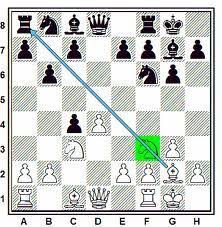Types of Tactics in Chess
- Sritej Sattaru
- Jun 27
- 5 min read
Updated: Aug 1
This week, we focused on key chess tactics including hanging pieces, double attacks, and forks. We also learned about important patterns like pins, skewers, discovered attacks, deflections, and more to help us spot threats and make better tactical decisions during the game.
Important Tactics We Are Learning
Here are some of the most important tactics every chess player should know:
Pin
A pin happens when you attack a piece that can’t move without causing something worse to happen.
Absolute Pin: The piece is pinned to the KING. It cannot move at all.

Relative Pin: The piece is pinned to a more valuable piece (but not the king). It can move, but it’s usually a bad idea.
Only a bishop, rook, or queen can pin a piece.

Skewer
A skewer is the opposite of a pin. You attack two pieces lined up, and the more valuable piece has to move away, letting you capture the piece behind it.
You can use a bishop, rook, or queen to do a skewer.

Discovered Attack
A discovered attack happens when you move one piece and reveal an attack by another piece behind it.

Discovered Check: The hidden piece gives a check to the king.

Double Check: The piece you move AND the hidden piece both check the king at the same time. This is very powerful because the king must move.

Windmill / Seesaw
A windmill is a rare but awesome tactic where you keep giving discovered checks over and over, using them to capture lots of pieces.

Interference
Interference means putting one of your pieces in the way so the enemy pieces can’t protect each other anymore.

Deflection
Deflection is when you force an enemy piece to leave an important square it is guarding.

Decoy
A decoy is when you trick an enemy piece into going to a square where you can attack it or set up a tactic.

Other Tactics Everyone Should Learn
Here are some extra tactics that are good to know:
X-Ray Attack: An indirect attack or defense through another piece in the way.

Zugzwang: A German word that means “it’s your turn, but any move you make will hurt you.”

Any move white plays here will lose the game for the White pieces. This is an example of a zugzwang. Zwischenzug/Intermezzo (In-Between Move): A surprising move you play in the middle of what looks like a forced sequence, often changing everything.

Undermining (Removing the Defender): You remove the piece defending another piece or square so you can attack successfully.

Sacrifice: Giving up a piece on purpose to gain something better, like checkmate or a big attack.

After Bxh7+, the king is forced to move out with Kxh7, which then allows Ng5+ and the queen going into the position. This sacrifice gives a winning position for the white pieces. Trapped Piece: When a piece is attacked and has no safe place to go.

Hanging Pieces Introduction
Hanging pieces are simply undefended pieces that can be taken for free. Always look carefully to see if you or your opponent have any hanging pieces on the board.

Hanging Pieces in More Depth
Hanging pieces are pieces that are not protected by any other piece. This means they can be captured without losing anything in return. We call them “hanging” because they are just sitting there with no help, waiting to be taken.
If you leave a piece hanging, your opponent will almost always take it for free, so it’s very important to check carefully before you make your move. Look at every square and ask yourself:
Is this piece defended by another piece?
If my opponent moves, can they capture this piece right away?
When you play chess, make it a habit to look for hanging pieces on both sides of the board:
Your Opponent’s Pieces: If your opponent forgets to protect something, you can capture it and gain material.
Your Own Pieces: Always double-check to be sure you are not leaving any of your pieces hanging.
Practicing how to spot hanging pieces will help you win more games and keep your pieces safe. Remember: Before you move, look for hanging pieces!
In this lesson, we reviewed key chess tactics like pins, forks, discovered attacks, and hanging pieces—undefended pieces that can be captured for free. We also practiced identifying when to take a piece, how to use helper mates, and reviewed castling. These tactics help us see threats and opportunities more clearly during a game.
Watching videos on tactics and seeing the top grandmaster games can help develop your intuition of seeing tactics. Tactics is the basis to chess. As you see more tactics, you will improve your chess skills.
Thank you for reading this!




Comments